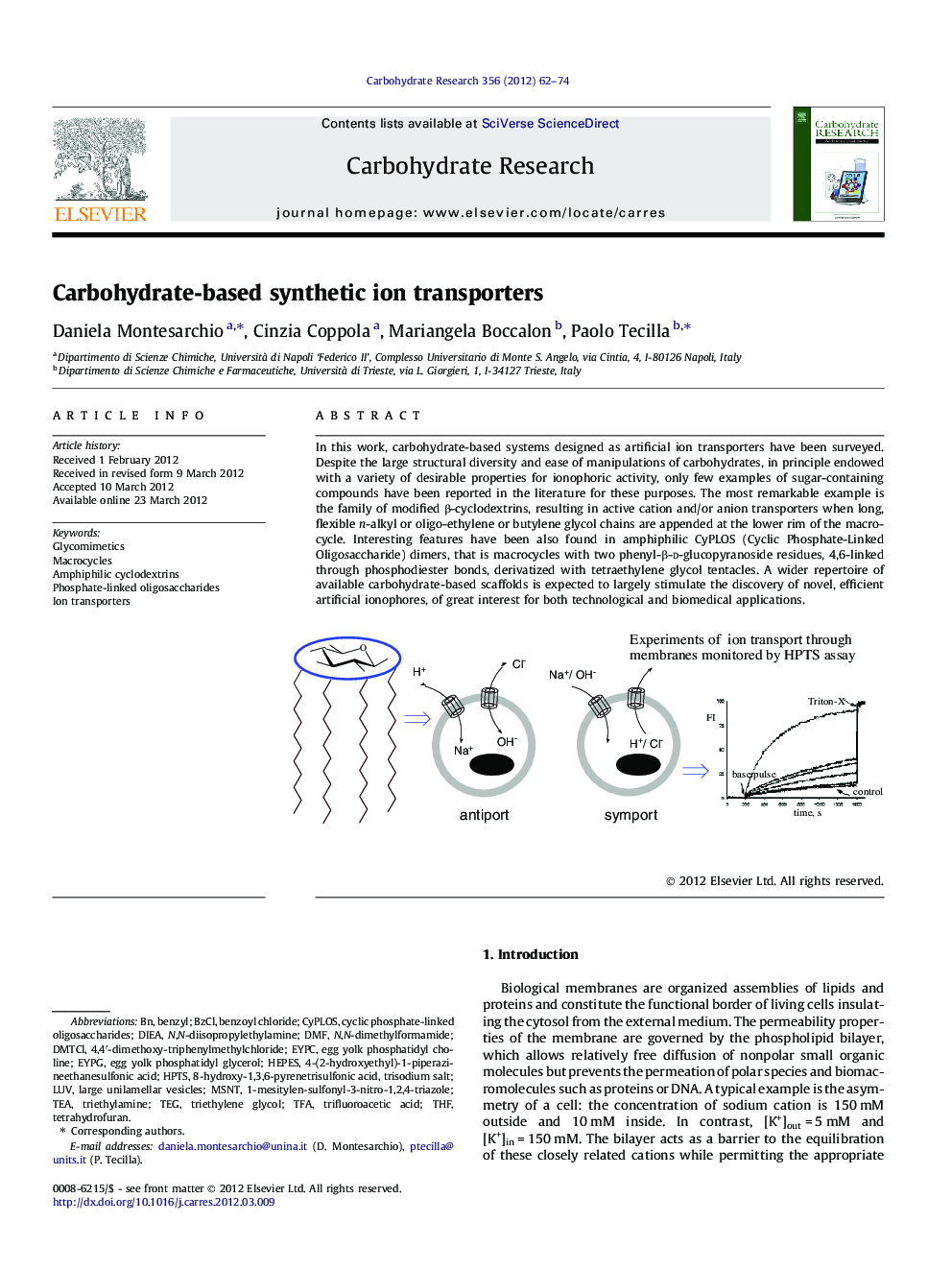| Article ID | Journal | Published Year | Pages | File Type |
|---|---|---|---|---|
| 7795094 | Carbohydrate Research | 2012 | 13 Pages |
Abstract
In this work, carbohydrate-based systems designed as artificial ion transporters have been surveyed. Despite the large structural diversity and ease of manipulations of carbohydrates, in principle endowed with a variety of desirable properties for ionophoric activity, only few examples of sugar-containing compounds have been reported in the literature for these purposes. The most remarkable example is the family of modified β-cyclodextrins, resulting in active cation and/or anion transporters when long, flexible n-alkyl or oligo-ethylene or butylene glycol chains are appended at the lower rim of the macrocycle. Interesting features have been also found in amphiphilic CyPLOS (Cyclic Phosphate-Linked Oligosaccharide) dimers, that is macrocycles with two phenyl-β-d-glucopyranoside residues, 4,6-linked through phosphodiester bonds, derivatized with tetraethylene glycol tentacles. A wider repertoire of available carbohydrate-based scaffolds is expected to largely stimulate the discovery of novel, efficient artificial ionophores, of great interest for both technological and biomedical applications.
Keywords
TEGEYPGHPTSGlycomimeticsEYPCDIEADMFTFATHFHEPES4-(2-hydroxyethyl)-1-piperazineethanesulfonic acidN,N-dimethylformamideN,N-diisopropylethylamineAmphiphilic cyclodextrinsTrifluoroacetic acidlarge unilamellar vesiclesbenzoyl chlorideBenzylTetrahydrofurantriethylamineTriethylene glycolion transportersLUVMacrocyclesTEA
Related Topics
Physical Sciences and Engineering
Chemistry
Organic Chemistry
Authors
Daniela Montesarchio, Cinzia Coppola, Mariangela Boccalon, Paolo Tecilla,
